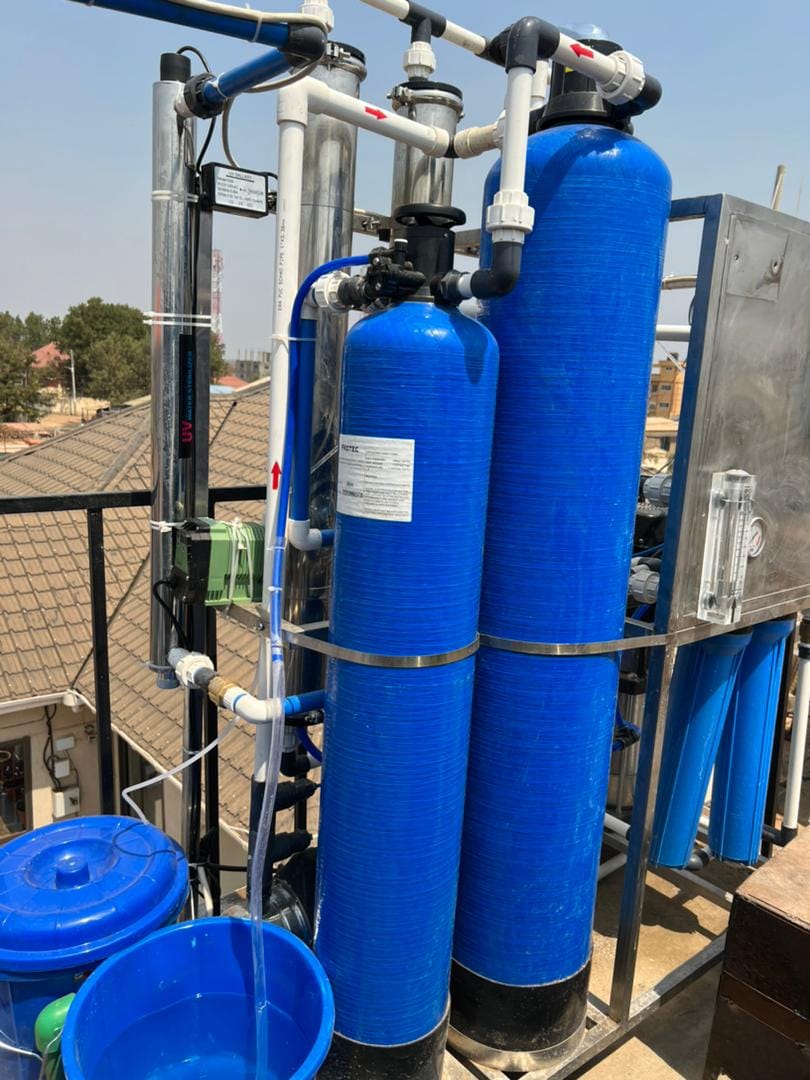In recent months, Tassmatt Limited has been involved in setting of water purification systems in Juba, the projects that started mid last year has seen so far 8 commercial water treatment stations set up on various parts of Juba town.

Access To Safe Water In South Sudan
About 59% of the population in South Sudan lacks access to safe water, while 10% of the population has access to improved sanitation. In order to survive, families are forced to drink dirty water, putting them at risk of waterborne diseases such as cholera and diarrhoea, which remain the leading causes of death among children in South Sudan.
The United Nations Sustainable Development Goal (SDG) 6 calls for governments and development partners to ensure availability and sustainable management of water and sanitation for all.
Since 1993, the United Nations marks World Water Day, held on 22 March every year, to raise awareness of the global water crisis. Despite this, access to clean drinking water remains a challenge to many, with at least 2.2 billion people living without access to safe water across the globe.
In South Sudan, only 39 per cent of the population has enough water to meet their household needs, dropping to 34 per cent in rural areas, according to the 2022 South Sudan Humanitarian Needs Overview.
To respond to this needs, our client AHL has seen an opportunity to tap in and invest on installation of commercial water treatment machines procured from Tassmatt Limited in Kenya. This is after thorough research for a reliable and professional company that can handle the capacity and after sale service as told by Mr. Antony, the proprietor of AHL.
Antony states that lack of access to clean drinking water remains a serious challenge for people in South Sudan, and in many parts of the world. He encourages community leaders to ensure the water facilities are well maintained to serve them for a long time.
“All users, the authorities and community leaders, it is your responsibility to make sure that the system has a plan for operational maintenance,” says Antony. “The water purification system is not for an individual. All of you in the area will benefit from this water system. If it is for all of you, it is also the responsibility of all of you to take care of it,” he explains.

Water Purification Technology Applied In South Sudan By Tassmatt Limited
The Technology applied followed 10 key processes that included:-
- CHLORINATION
- SAND FILTRATON
- ACTIVATED CARBON
- ACTIVATED CARBON
- MICRO FILTRATION
- ANTSCALANT DOSING
- REVERSE OSIMOSIS
- UV SYSTEM
- STORAGE TANKS
- DISTRIBUTION
Treatment Process
Underground water with high mineral content requires a more vigorous way of removing these minerals. By use of membrane technology, we are able to achieve removal of minerals from water up to above 96% reduction levels whilst maintaining essential minerals that is healthy for intake. One of the most common treatment processes is reverse osmosis.
Reverse Osmosis: The RO system produces purified water (permeate) from the feed water via rejection of all organic and inorganic constituents by a semi – permeable membrane system. The RO system separates the incoming feed stream into two effluent streams:
The permeate (treated water) passes through Reverse Osmosis membranes and thus contains greatly reduced quantities of dissolved mineral salts and organics for use (typically ≥ 96% rejection ratio). The designed recovery of the RO machine is 50 – 75%
The concentrate (reject water) is the stream which passes tangentially across the membrane surface and thus retains the impurities separated from the permeate stream. Acertain minimum flow of ‘concentrate’ is necessary to keep the RO membranes from ‘fouling’ due to the removed mineral salts and organic contents.
Treatment process
We recommend that water from the borehole to be pumped to the storage tank through aeration to oxidize dissolved metals (client’s scope).
From the storage tank, we recommend that this water be chlorinated (for removing bacteria)and pumped through a filter comprising of sand media and activated carbon for removal of any suspended matter that will cause blockage in the RO membranes and removal of chlorine.
Water then passes through cartridges for removal of separating macromolecules and suspended particles To prevent scaling of the RO membranes, It will be important to dose an anti- scalant into the water.
GE Hypersperse MSI 310 antiscalant will therefore be into the water. GE Hypersperse MSI 310 antiscalant will therefore be continuously added into the pipeline prior to the RO to prevent
scaling.
Finally, the “pretreated” water will then be passed through a Reverse Osmosis Unit to reduce the Fluorides, Oxidized metals and condition the water. This water can then be stored in a clean water tank (client’s scope). The water will then be pumped through a cartridge filter and UV for sterilization before flowing into the tank, if the water is distributed directly to points of use.


